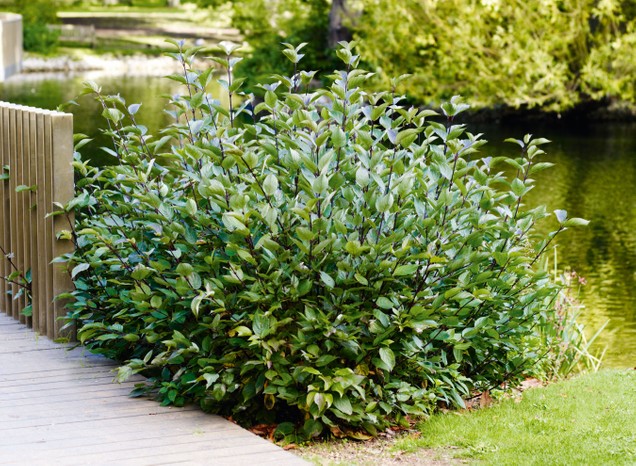
Pruning dogwoods
Learn how to prune dogwood to ensure that it produces plenty of colourful stems for winter. Words by Camilla Phelps, photographs by Andrew Montgomery
Dogwoods (Cornus) are an essential plant for the winter border, as they have such colourful winter stems. The effect of rich red, orange, yellow or bright green multiple stems in winter light is stunning, especially when planted in large groups by water.
Dogwoods combine well in borders with the white winter stems of the ghost bramble (Rubus cockburnianus or R. thibetanus) for contrast, and also look good with emerging early spring bulbs such as snowdrops, Cyclamen coum and crocus.
Perhaps because this has become a planting trend in recent years, gardeners have become a little over-zealous in coppicing or pruning dogwoods to get those desirable colourful stems. As a result, plants are often pruned too early in their life span, with disappointing results.
Dogwoods grown for their colourful stems are different to those grown for their summer flowers – read our feature on the best flowering dogwoods.
How to prune dogwood
The trick for getting the best out of dogwoods is to let them establish for three to four years before you coppice for the first time.
When to prune dogwood
Prune dogwood in late winter or early spring (February or March), before the plants have started into leaf. Much of the work can be carried out with a pair of good, sharp secateurs, because stems are relatively thin. But for thicker stems, always use a small, sharp pruning saw, as long-handled loppers can squash the ends of the cut and bruise the stems, which ultimately leads to die-back and rotting.
Cut back to around 7-10cm from the ground. This encourages a better shape for the new growth. Mulch generously after cutting. For more on coppicing, read our piece on how to coppice hazel.
Then cut back hard every other year for the colourful stems.
First 3-4 years: do not prune

This established dogwood, Cornus alba ‘Sibirica’, hasn’t been cut back for a couple of seasons and is now about 1.5m tall and wide.
Once your dogwood has matured and established, you can start to prune.
Late winter: prune

Pruning in winter will keep the stems compact and colourful the following winter. The ‘stool’ should have a smooth, clean finish to encourage healthy new stem growth. Cut back to between 7cm and 10cm from the ground.
The following winter: colourful winter stems

After a summer of growth, the dogwood has worked hard to generate lots of dense new stems. Once the leaves have fallen, their rich red colour can be enjoyed. Dogwoods do not need pruning every year, so you can leave it for a year.
The following winter: hard prune
Having left the plant unpruned for a year, you can then prune

Niwaki bundle worth £57 when you subscribe
Subscribe to Gardens Illustrated magazine and claim your Niwaki bundle worth £57
*UK only

Container Gardening Special Edition
The Gardens Illustrated Guide to Container Gardening.
In this special edition, discover colourful flower combinations and seasonal planting schemes for pots designed by leading plantspeople, and essential know-how for container gardening success. Just £9.99 inc UK p&pBy entering your details, you are agreeing to our terms and conditions and privacy policy. You can unsubscribe at any time.

Gardens of the Globe
From botanical wonders in Australia to tranquil havens closer to home in Ireland, let this guide help you to discover some of the most glorious gardens around the world
By entering your details, you are agreeing to our terms and conditions and privacy policy. You can unsubscribe at any time.




